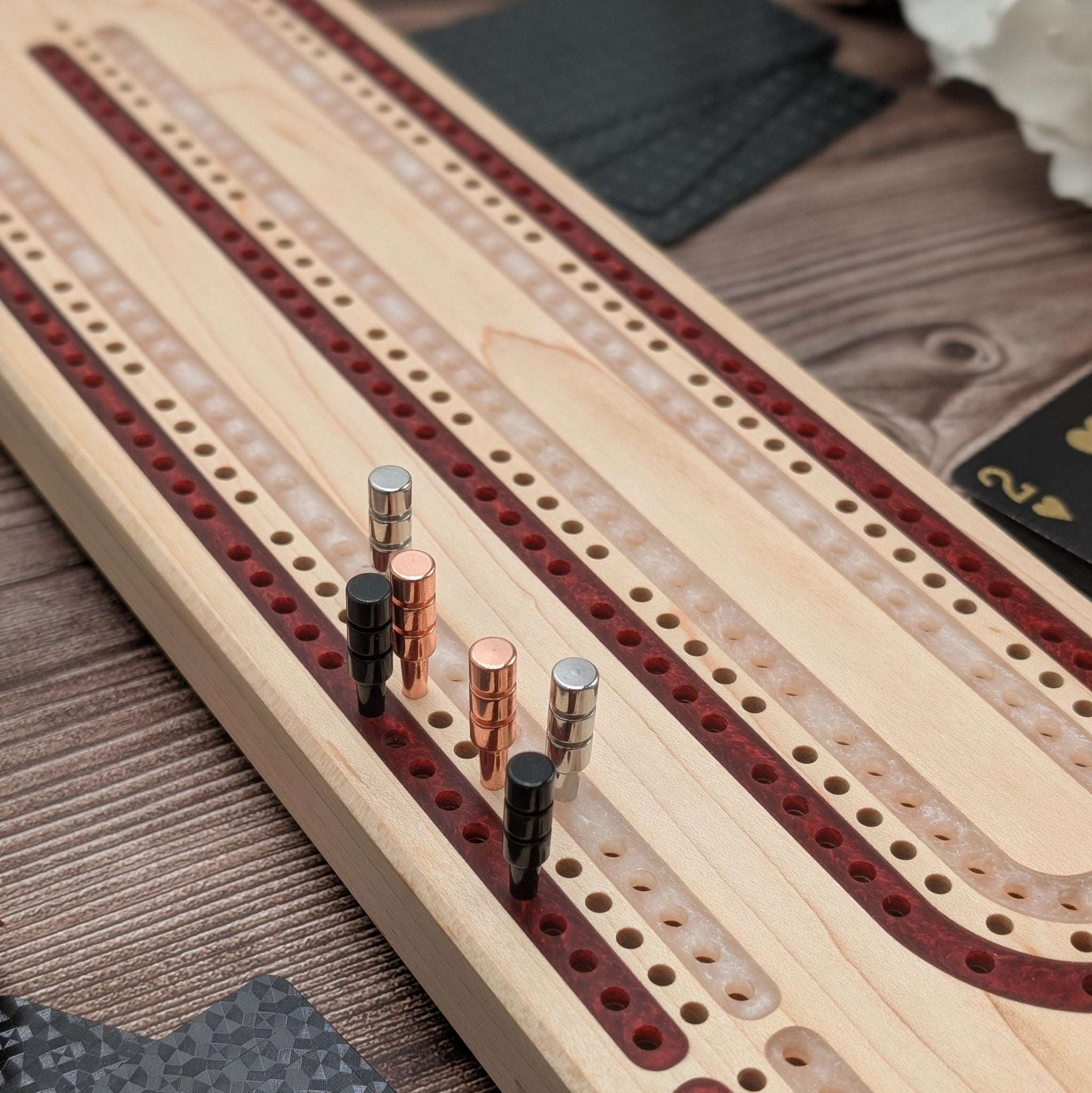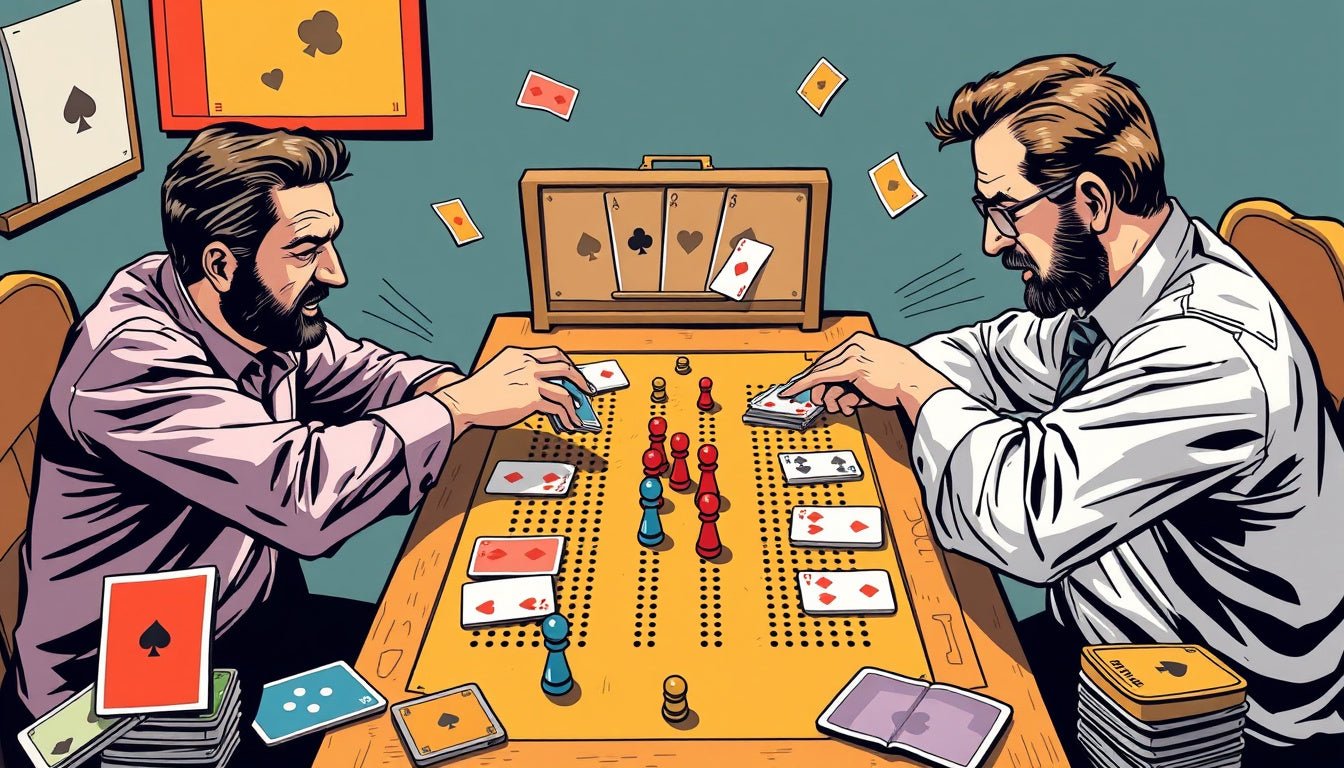
Mastering Cribbage: Tips, Strategies, and Insights for Every Player
Cribbage is known as Britain's card game. It mixes chance with skill and brings friends close. Two players face off, though more can join in. In this guide, we show basic rules, a look at its past, smart plays, and hints for better play. This help suits both new players and those with much skill.
The History of Cribbage
Cribbage began in the 17th century with the English poet Sir John Suckling. It came from a game called noddy and changed over time. The game grew in England. It then moved to North America, where miners and sailors played it during quiet times.
Understanding the Basics
Objective of the Game
Your aim is clear. Be the first to reach 121 points. You score in many ways through pegging and by adding up card values in your hand and the crib.
What You Need to Play
To begin, you need:
- A 52-card deck
- A cribbage board with 121 holes for two players
- Two pegs per player to track scores
Setup and Deal
- The players cut cards. The lower card makes its owner the dealer. The deal will switch each round.
- The dealer gives six cards to each player. Each player selects two cards to discard into the crib. The crib belongs to the dealer.
- The non-dealer cuts the deck. The top card is shown as the starter. If this card is a Jack, the dealer scores 2 points at once.

Gameplay: The Three Stages of Cribbage
Cribbage works in three parts: the Deal, the Play, and the Show.
1. The Play
The non-dealer, called the pone, puts a card face up and names its value. The dealer then plays a card. Both try to keep the total under 31.
Points score when:
- The total is exactly 15: you get 2 points
- The total is exactly 31: you get 2 points
- You form pairs, triples, or runs: you score based on the cards
2. The Show
After play, both players count points. They add their hand to the starter card. Points come when:
- Cards add up to 15: score 2 points
- Two cards share the same value: score 2 points
- Three or more cards form a run: score as many points as there are cards
- If four cards share one suit: score 4 points, or 5 if the starter joins them
Then the dealer turns over the crib and counts its points the same way.
3. Winning the Game
The game stops when a player reaches or goes above 121 points. If this win happens early (such as when the starter is a Jack), the game ends at once.
Strategies for Success in Cribbage
Cribbage mixes luck with clear plans. Here are some hints to play better:
- Use your cards well during pegging. Try to reach totals of 15 or 31.
- Be smart with your crib. If you are not the dealer, put low-value cards into the crib to limit your foe's points. When you deal, keep cards that work well with the starter.
- Think of the odds. Watch what cards your foe might have. A five at the start can help your foe form pairs or runs.
- Practice counting your points. Learn to spot scores quickly in your hand and in the crib.
Conclusion
Cribbage is more than a simple card game. It ties history with skill and shared play. The key is to learn its parts and work on your plan. Whether you play with friends or on an online board, knowing cribbage well makes the game more fun. So, pull out the deck, set your pegs, and step into the game!
About Ebonwood
Ebonwood is a tabletop gaming company based in Kimberly, Wisconsin, creating premium gear for dice collectors, gamers, and gift-givers. From stunning resin dice sets and luxurious gemstone dice to beautifully crafted dice vaults, dice rolling trays, and elegant cribbage boards, every product is designed with quality, style, and creativity in mind.
Whether you're gearing up for your next D&D session or shopping for a one-of-a-kind gift, you'll find something extraordinary at ebonwood.com.



Leave a comment
This site is protected by hCaptcha and the hCaptcha Privacy Policy and Terms of Service apply.